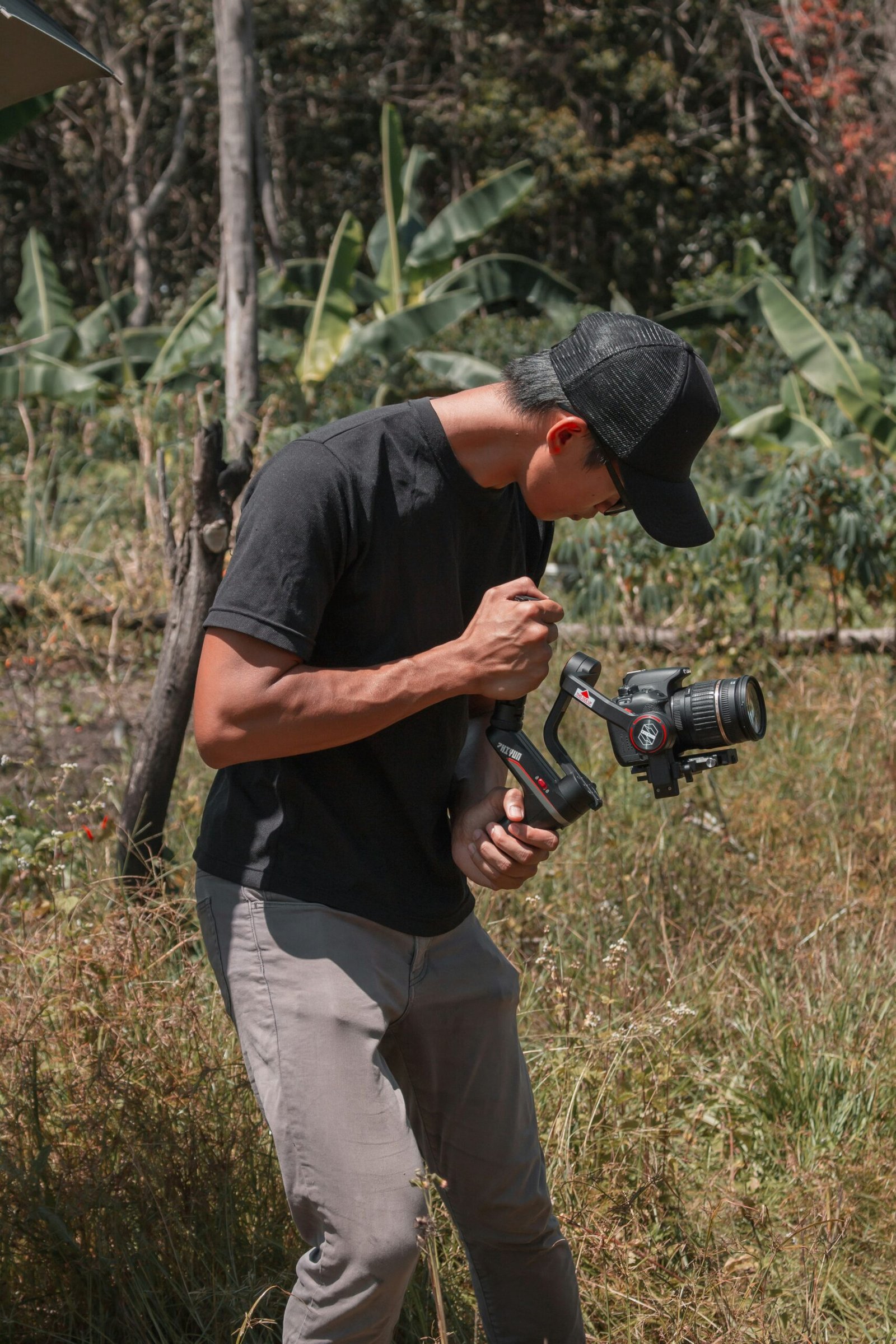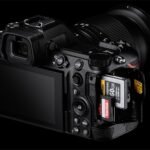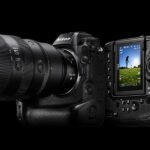Introduction to the Nikon 50mm f/1.2
Nikon 50mm f/1.2 review. The Nikon 50mm f/1.2 lens is a significant piece of equipment in the world of photography, particularly revered among those engaged in portrait and low-light photography. Distinctly renowned for its wide aperture of f/1.2, this lens allows photographers to capture sharp images with breathtaking background blur and impressive depth of field. This capacity to generate stunning bokeh is one of the key features that sets the Nikon 50mm f/1.2 apart from many other lenses in its class.
Specifically crafted for exceptional performance in low-light conditions, the Nikon 50mm f/1.2 is built to provide superior image quality under a variety of shooting conditions. The wide aperture not only enhances light intake, thus boosting performance in dim environments, but also supports high shutter speeds that are essential for freezing motion without sacrificing clarity. Furthermore, this lens’s construction ensures that it maintains performance consistency, whether it is used for still photography or video recording.
Throughout the ensuing sections of this blog post, we will delve deeper into several core aspects of the Nikon 50mm f/1.2. We will examine its overall performance, scrutinize the quality of the images it produces, and evaluate its size and weight relative to other options on the market. These insights will elucidate how this lens measures up in practical applications, from both a technical and usability standpoint.
Additionally, a comprehensive price comparison will be included to determine the value proposition of the Nikon 50mm f/1.2. By the end of this comprehensive evaluation, readers should have a well-rounded understanding of whether this lens aligns with their photographic needs and expectations, and how it stands out in the competitive landscape of high-performance lenses.

Impressive Sharpness and Beautiful Bokeh
The Nikon 50mm f/1.2 lens is celebrated for its exceptional image quality, with sharpness and bokeh often highlighted by photographers as its standout characteristics. One of the key features contributing to this performance is the wide f/1.2 aperture. At this aperture, the lens achieves a very shallow depth of field, allowing photographers to isolate their subjects with striking clarity against beautifully blurred backgrounds. This quality is particularly desirable in portrait photography, where the creamy bokeh enhances the visual appeal of the images.
When examining the sharpness of the Nikon 50mm f/1.2, users frequently report impressive results even at the maximum aperture. Testing under various conditions, the lens consistently delivers sharp images with fine detail in the center of the frame, while maintaining good performance towards the edges. Professional portrait photographers often praise the lens for its ability to capture intricate details of their subjects, such as facial features and textures, with remarkable precision.
The bokeh produced by this lens is another aspect that receives commendation. The Nikon 50mm f/1.2 creates a smooth and pleasing bokeh that enhances the aesthetic quality of photographs. The quality of the out-of-focus areas is crucial in genres like portrait and macro photography, where distracting backgrounds can take away from the main subject. Photographers appreciate how this lens can transform busy or mundane backgrounds into a soft, harmonious blur, drawing attention to the subject without introducing unwanted distractions.
In low-light situations, the f/1.2 aperture allows more light to enter the lens, which is invaluable for capturing well-exposed photos without resorting to higher ISO settings that may introduce noise. Numerous photographers have shared testimonials and comparison shots, demonstrating the lens’s proficiency in maintaining image quality at night or in dimly lit environments. The combination of sharpness, beautiful bokeh, and outstanding low-light performance cements the Nikon 50mm f/1.2 as a top choice for photographers seeking to elevate their craft.
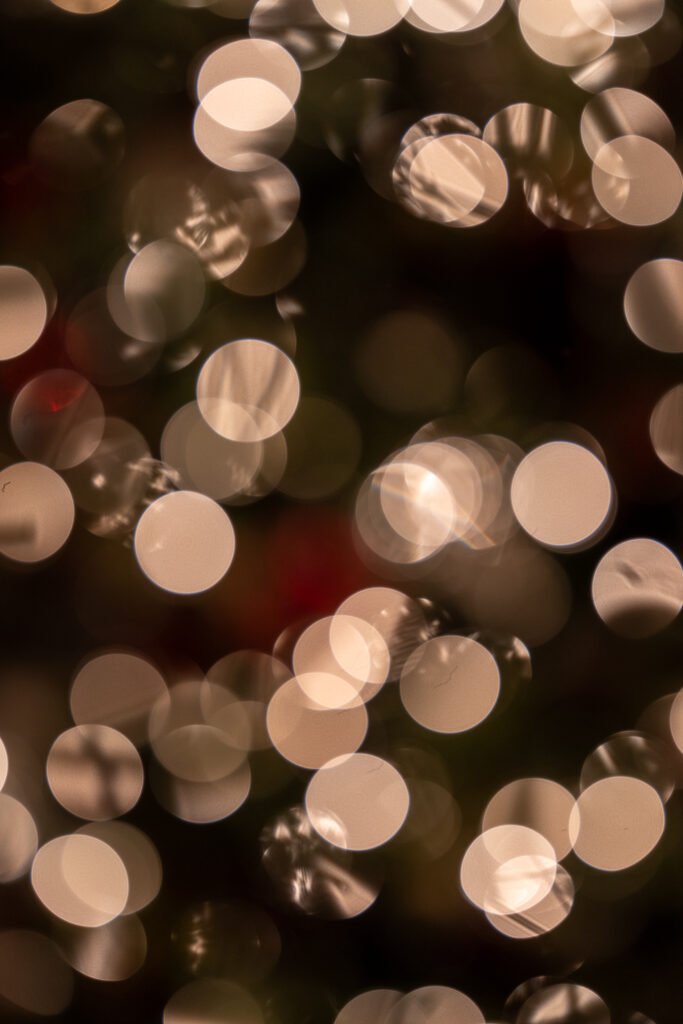
Low-Light Performance: A Game Changer?
The Nikon 50mm f/1.2 lens excels in low-light scenarios, thanks to its wide maximum aperture of f/1.2. This capability allows significantly greater light entry compared to other lenses with narrower apertures, making it an ideal choice for evening shoots or indoor photography, where lighting conditions are less than optimal. Utilizing the f/1.2 aperture, photographers can capture images with less reliance on a flash, preserving the natural ambiance of the scene.
Comparing the Nikon 50mm f/1.2 with its sibling, the Nikon 50mm f/1.8, reveals notable differences in their performance under low-light conditions. The f/1.8 lens, though competent, allows less light to enter the camera due to its narrower maximum aperture. This limitation often necessitates higher ISO settings or slower shutter speeds, which can introduce noise or motion blur to the images. Conversely, the f/1.2 lens permits faster shutter speeds and lower ISO settings, producing cleaner and sharper images even in challenging lighting conditions.
The value proposition of the Nikon 50mm f/1.2 lies in its superior performance in low-light environments. For photographers who frequently operate in such conditions, the increased light intake and improved image quality can be invaluable, justifying the higher price tag. However, for casual users who primarily shoot in well-lit situations, the benefits might not outweigh the additional cost. The Nikon 50mm f/1.8 remains a strong contender for those who do not require the extra stop of light, offering a more budget-friendly option without sacrificing too much in image quality.
Ultimately, the decision to opt for the Nikon 50mm f/1.2 will depend on the specific needs and priorities of the photographer. Its exceptional low-light performance can indeed be a game-changer for those who demand the utmost in image clarity and detail in less-than-ideal lighting scenarios.
Comparing to the Nikon 50mm f/1.8
The Nikon 50mm f/1.2 and the Nikon 50mm f/1.8 lenses each occupy a specific niche in the photography world, appealing to different types of photographers based on requirements and budgets. While both lenses are prime lenses praised for their quality, there are key differences in their performance, image quality, build, and cost that deserve a detailed comparison.
When it comes to image quality, the Nikon 50mm f/1.2 lens excels with its wider aperture, delivering exceptional bokeh and low light performance. This larger aperture allows photographers to create stunningly shallow depth-of-field effects, making subjects pop against beautifully soft backgrounds. On the other hand, the Nikon 50mm f/1.8, while still capable of producing professional-quality images, falls slightly short in extremely dim lighting and can’t match the creamy bokeh of its more expensive counterpart.
Performance under varying conditions also highlights the differences between these lenses. The f/1.2 version offers superior autofocus speed and accuracy, which is particularly beneficial in fast-paced environments like events or wildlife photography. In contrast, the f/1.8 lens, although competent, may exhibit slower autofocus in challenging lighting conditions, making it less ideal for action-packed scenarios.
Regarding build quality, the Nikon 50mm f/1.2 lens is constructed with a more robust and durable design, featuring weather-sealing to withstand harsh conditions. This is in stark contrast to the Nikon 50mm f/1.8, which, while well-built, lacks the same level of ruggedness. This difference can impact longevity and reliability, especially for outdoor or travel photographers who frequently face changing weather or difficult terrains.
Another critical aspect is price. The Nikon 50mm f/1.2 is considerably more expensive, reflecting its advanced features and higher build quality. For many photographers, the Nikon 50mm f/1.8 provides exceptional value, offering satisfactory performance for everyday shooting at a fraction of the cost. It proves to be an excellent choice for hobbyists or those on a tighter budget.
In summary, the choice between the Nikon 50mm f/1.2 and the Nikon 50mm f/1.8 ultimately depends on the photographer’s specific needs and financial considerations. Those who require the utmost in low light performance, autofocus speed, and build quality will find the premium price of the f/1.2 justified. Conversely, for everyday use and broader accessibility, the f/1.8 version remains a highly attractive option due to its affordability and solid performance.

Size and Weight Considerations
The Nikon 50mm f/1.2 is renowned not only for its optical performance but also for its substantial build. Weighing in at approximately 1090 grams, it is noticeably heavier than many of its counterparts, such as the Canon RF 50mm f/1.2L USM, which tips the scales at about 950 grams, or the lighter Sony FE 50mm f/1.4 ZA, coming in at around 778 grams. This increased weight is primarily due to the robust materials used in its construction, coupled with its complex internal mechanisms designed to deliver superior image quality.
The dimensions of the Nikon 50mm f/1.2 further underscore its hefty nature. Measuring 89.5mm in length and 108mm in diameter, this lens is larger than the average 50mm prime. This bulk may be a consideration, particularly for photographers who prioritize portability and ease of use. When engaged in long shooting sessions, the weight of this lens can lead to fatigue, especially if handheld shooting is involved. It can necessitate the use of additional carrying supports or even mounts to mitigate strain.
Despite these potential drawbacks, the solid build quality of the Nikon 50mm f/1.2 offers several advantages. The lens is built to withstand the rigors of professional use, providing durability that ensures longevity. Its design incorporates weather-sealing and robust materials, which protect against dust and moisture – a critical feature for those shooting in challenging environments. The heft and feel of the lens evoke a sense of reliability and sturdiness that many photographers appreciate, contributing to a steady and confident shooting experience.
In conclusion, while the Nikon 50mm f/1.2’s size and weight may present challenges for some users, its exceptional build quality and resilience offer substantial benefits. Weighing these factors is essential when considering this lens for both amateur and professional photography needs.
Price vs. Value: Making the Investment Decision
When considering an investment of approximately $2,100 in the Nikon 50mm f/1.2, a critical examination of the price versus the value it offers becomes essential. This lens is positioned in the market as a premium option, promising superior performance and image quality. The fundamental question is whether these enhancements justify the significant expense, especially when the much cheaper Nikon 50mm f/1.8 is available.
The Nikon 50mm f/1.2 boasts a fast maximum aperture and exceptional sharpness, which are key attractions for both professional and hobbyist photographers. Its ability to perform excellently in low-light situations and create a pleasing bokeh makes it a highly desirable choice for portrait and event photographers. Moreover, the lens’s robust build quality ensures durability, making it a valuable long-term investment.
However, for hobbyists or budget-conscious photographers, the Nikon 50mm f/1.8, priced below $500, offers significant savings. It may not match the f/1.2 in terms of speed or bokeh rendition, but it still delivers commendable sharpness and overall image quality. This lens is lightweight and compact, making it convenient for everyday use and travel photography.
Professional photographers often argue that the Nikon 50mm f/1.2’s superior performance can justify the higher cost. The sharpness, contrast, and low-light capabilities it provides can translate into better client satisfaction and higher-quality outputs, which can be indispensable in a competitive field. On the other hand, hobbyist photographers may find that the 50mm f/1.8 meets most of their needs without the hefty price tag.
Additionally, third-party alternatives, such as Sigma and Tamron, offer lenses that claim to compete closely with Nikon’s offerings at often lower price points, providing more avenues for photographers to consider.
Ultimately, the decision to invest in the Nikon 50mm f/1.2 hinges on individual priorities and professional requirements. Understanding one’s photography goals and assessing whether the enhanced capabilities align with those objectives is crucial in determining the overall value of this high-end lens.
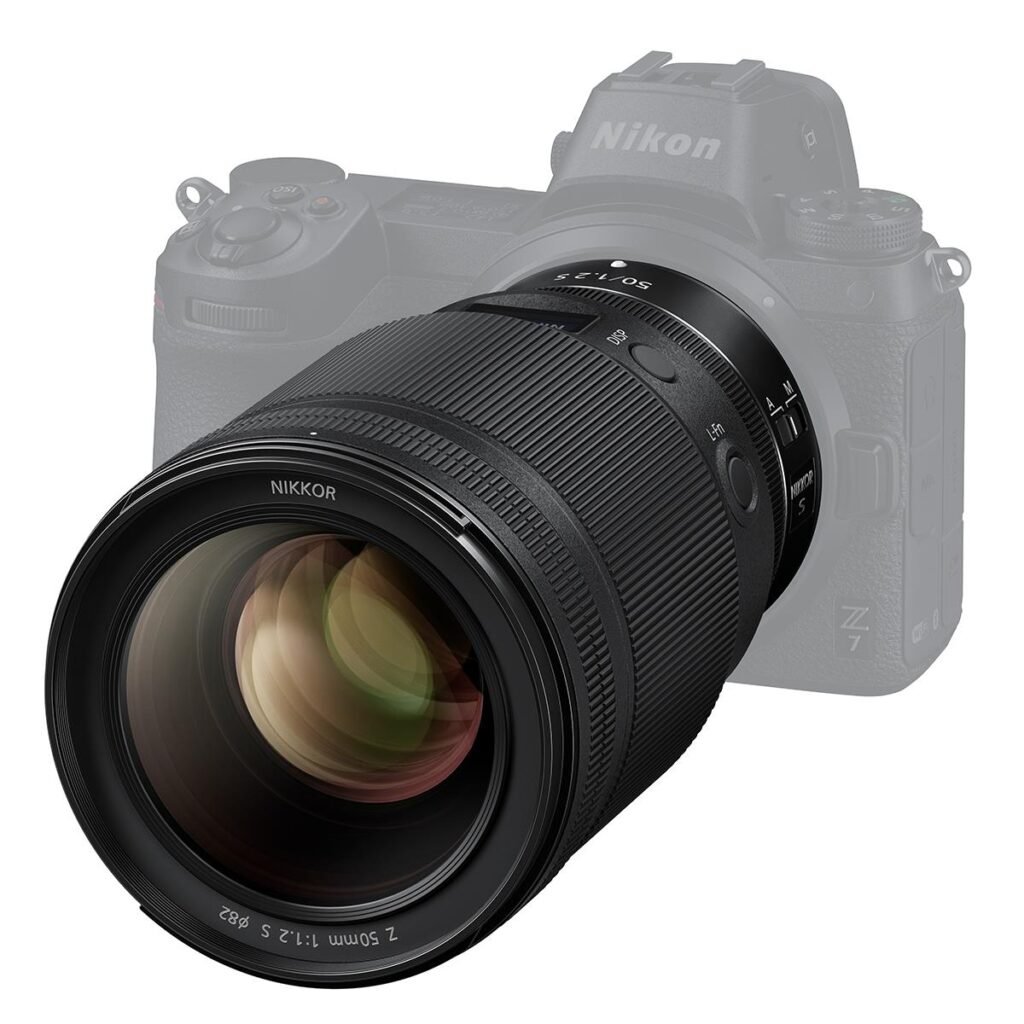
Comparative Overview with Canon and Sony Lenses
When comparing the Nikon 50mm f/1.2 to its counterparts from Canon and Sony, namely the Canon RF 50mm f/1.2L and the Sony 50mm f/1.2 GM, several factors come into play, including features, image quality, and user experiences.
The Canon RF 50mm f/1.2L stands out for its exceptional sharpness and fast autofocus system. With a rugged, weather-sealed build, it is designed to withstand various shooting conditions. Canon has always emphasized impeccable image quality, and this lens is no exception, offering creamy bokeh and stunning edge-to-edge sharpness. However, it is also one of the heftiest options in the market, weighing approximately 950 grams, which some photographers may find cumbersome for prolonged use. Its high price point may also be a deterrent for budget-conscious users.
In comparison, the Sony 50mm f/1.2 GM is renowned for its exceptional combination of compactness and performance. Weighing in at around 778 grams, it is relatively lightweight without compromising on image quality. Sony’s implementation of advanced optics and a responsive autofocus system makes it a strong contender for professionals who require both exceptional performance and portability. The lens delivers impressive clarity and beautiful bokeh, suitable for various photography styles. Its price, while still on the higher side, tends to be more palatable compared to Canon’s offering.
On the other hand, the Nikon 50mm f/1.2 brings its own set of strengths to the table. It balances well between high-quality optics and a robust build, making it suitable for a wide range of photographic applications. Its autofocus performance, while not as fast as Canon’s, is reliable and accurate. Priced competitively in the market, it provides a significant value proposition for photographers invested in the Nikon ecosystem who seek top-tier image quality without excessively breaking the bank. Additionally, its relatively moderate weight of around 805 grams positions it as a practical option for those seeking a blend of performance and manageability.
Ultimately, the choice between the Nikon 50mm f/1.2, Canon RF 50mm f/1.2L, and Sony 50mm f/1.2 GM will depend on the specific needs of photographers. Factors such as system compatibility, budget constraints, and usage preferences play critical roles in determining the most suitable lens.
Conclusion: Is the Nikon 50mm f/1.2 Right for You?
The Nikon 50mm f/1.2 lens, with its exceptional performance and image quality, emerges as a noteworthy option for photographers seeking premium equipment. Throughout this blog post, we have examined various facets of this lens, from the sharpness and clarity of its images to its usability under different shooting conditions. The lens’s wide aperture of f/1.2 allows for remarkable low-light capabilities and exquisite bokeh, making it a superb choice for portrait photography. Additionally, its build quality and handling affirm Nikon’s commitment to excellence.
However, the decision to invest in the Nikon 50mm f/1.2 ultimately hinges on your specific requirements and circumstances. For professional photographers and serious hobbyists who prioritize top-tier image quality and have the budget to accommodate this premium lens, the Nikon 50mm f/1.2 is undeniably a valuable addition to their kit. Its ability to perform exceptionally in varied lighting conditions and deliver superior portraits justifies the investment for these individuals.
Conversely, photographers who prefer a lighter, more compact setup might find the weight and size of the Nikon 50mm f/1.2 somewhat cumbersome for travel or street photography. Moreover, if budget constraints are a significant factor, there are other 50mm lenses with a more affordable price tag that still offer decent performance, though not matching the elite quality of the f/1.2.
Ultimately, the Nikon 50mm f/1.2 is a stellar lens that stands out for its image quality, performance, and build. However, determining its worthiness for your specific needs involves an assessment of your photographic ambitions, budgetary limits, and ergonomic preferences. By aligning these factors, you can ascertain whether this distinguished lens is the optimal choice for enhancing your photographic pursuits.
Fstoppers – This article discusses the performance and value of the Nikon 50mm f/1.2 lens compared to the 50mm f/1.8 and other similar lenses from different brands. The conversation highlights how some photographers question whether the price difference is justified by the performance improvement (Fstoppers).
Photography Forums – Users often discuss the size, weight, and handling of the Nikon 50mm f/1.2 lens in various photography forums. There is a general consensus that while the lens offers exceptional image quality, its bulk and price might be deterrents for some photographers (Photography Life).


